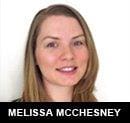It’s tax time, and one of the big changes many people will see on their taxes this year has to do with the Affordable Care Act (ACA). As a result, everyone will see new questions, and some may need to use new forms when filing their federal income taxes for 2014. In this two-part blog series we’ll look at the new things people should expect when preparing their taxes. Part One focuses on taxpayers who did have health coverage in 2014, and Part Two will focus on taxpayers who did not have health insurance for all or part of 2014.
One of the ACA’s key components is that most Americans are required to have health insurance, or else pay a tax penalty. This requirement, known as the “individual mandate,” means that individuals are required to have qualifying health coverage during the year, whether they purchased it themselves, had a health plan through their job, or received health coverage through other means (such as Medicare, Medicaid, CHIP, veteran’s health care, etc.). Tax forms have changed a little bit to reflect the health coverage requirement.
If an individual did not have coverage throughout the year, they must either qualify for an exemption from the requirement or pay a fine when filing their taxes. We’ll cover those situations in Part Two.
What you need to know
Most taxpayers who had a health insurance plan for all of 2014 will simply need to check a box on Line 61 of their Form 1040, U.S. Individual Income Tax Return.

Taxpayers who enrolled in a health plan through the Marketplace will receive a Health Insurance Marketplace Statement (new IRS Form 1095-A). Like a W-2 or Form 1099, this form provides information needed to file taxes. Specifically, the form provides the amount of financial assistance the person received to help pay for their Marketplace plan.
84 percent of the people who signed up for coverage on the Marketplace for 2014 received financial assistance through a premium tax credit to pay for their plan. Most people received this credit in advance as a subsidy to their monthly premium bills. The amount received as a subsidy was based on their projected income. Using their actual income and the 1095-A, taxpayers will complete Form 8962 to determine whether they actually qualified for a larger tax credit than they received, or if they underestimated their income and got too large a credit and owe the IRS. Individuals who qualified for a larger credit will receive this as an increase to their tax refund.
Those taxpayers who need to pay back some of their advanced tax credit (subsidy) will not be charged additional fines or fees. On January 26, 2015, the IRS released a notice that allows fees for late payments or underpayment of estimated tax to be waived if they resulted from repayment of excess advance payments of the premium tax credit for Marketplace coverage. See the notice for steps to waive the fees. Excess premium tax credits are paid back either as a reduction to a person’s tax refund or if they are not entitled to a refund, individuals can pay the taxes back online, by phone, or by mail. The IRS also offers payment options to pay over time for individuals who cannot pay all at once.
Where to Get Help
This is meant only as a high-level overview of the ACA’s impact on tax filing. For more information about how health care will impact taxes go to www.Healthcare.gov/taxes or www.irs.gov/Affordable-Care-Act. The Center on Budget and Policy Priorities also developed the “The Tax Preparer’s Guide to the Affordable Care Act” which provides detailed information on the ACA impact to taxes.
To learn more about free tax assistance and filing options available for low and moderate income taxpayers go to www.IRS.gov/freefile and www.IRS.gov/VITA.
